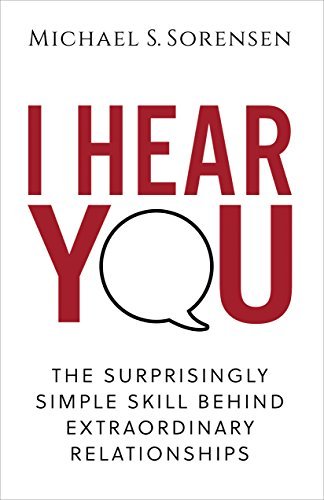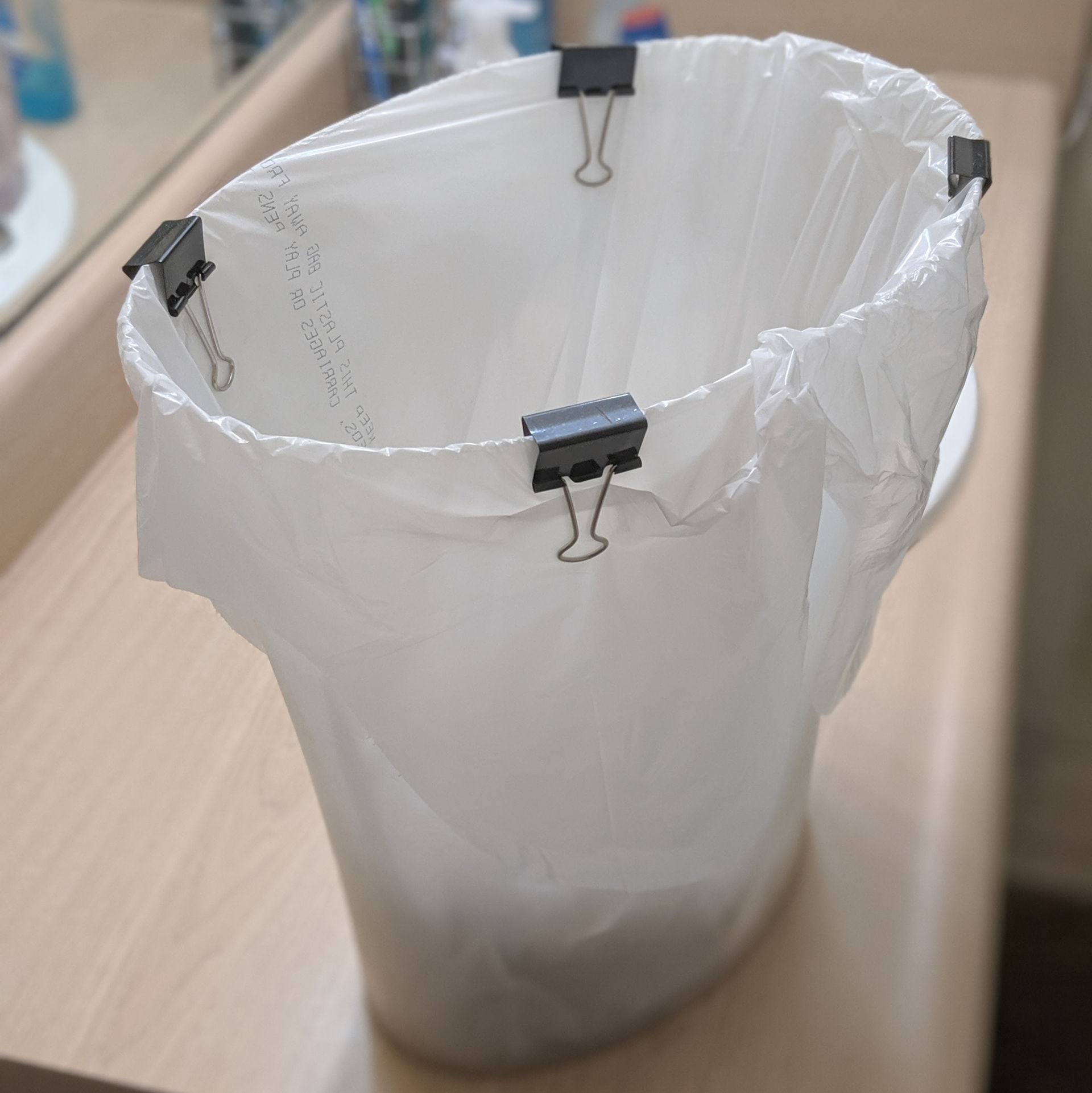Table of Contents
Validation Will Improve Your Relationships
Make Life Easier
In his simple, yet powerful book I Hear You: The Surprisingly Simple Skill Behind Extraordinary Relationships, author Michael Sorensen lays out the fundamentals of validation.
Sorensen says that, “whether you’re looking to improve your relationship with your spouse, navigate difficult conversations at work, or connect on a deeper level with friends and family, this book delivers simple, practical, proven techniques for improving any relationship in your life.”
I just got done reading it, and I can say with 100% certainty that it lives up to its claims. It’s easy to read and completely practical. It provided me with new language and communication skills that I could immediately employ in my daily life.
I actually bumped another topic for this one because I loved the book so much!
So, let’s dive into the highlights of I Hear You, and learn a bit more about validation in relationships, an incredible (and incredibly simple) skill.
What is Validation?
According to VeryWellMind, emotional validation is the process of learning about, understanding, and expressing acceptance of another person’s emotional experience.
Why Validation is Worth Your Time
As humans, we crave feeling heard, understood, and accepted, especially in difficult or stressful times. Often though, when we share how we’re feeling with others, we’re offered solutions for and opinions about those feelings.
Usually we’re not looking for a solution; we’re almost always craving validation.
I know that, in the past, my knee-jerk reaction to someone venting to me was to offer advice or answers. At the beginning of my relationship with Kevin, I did this all the time. And, honestly, it drove him crazy.
The problem is, most folks don’t have the language tools to ask for what they really need. Think about it: Have you ever started venting to someone and had them offer their opinion about how you’re feeling and/or offer their advice. Then, after the conversation, did you find yourself frustrated with the other person, but couldn’t pinpoint why?
Chances are, you were looking for validation in that moment, and it never came.
When you learn to spot these situations, you instantly improve both your own skills in helping others, and your ability to communicate your needs with folks around you.
Validation 101
Validation takes two things:
- Acknowledging how someone feels
- Offering justification for that feeling
Also key here, validation is non-judgmental. Meaning, you don’t have to attach an opinion to your validation; you can simply acknowledge how someone is feeling and leave it at that.
Common Misconceptions
You Have to Agree to Validate
The misconception that really surprised me at first, but then seemed super obvious after I thought about it was that you can validate someone’s emotions even if you disagree.
It’s true! Even if your coworker, for example, mentions feeling angry that they were passed over for a promotion, but it’s clear they really didn’t deserve it, you can validate their feeling anyway. You could say something like, “Wow, yeah, you must be feeling pretty frustrated about that promotion.” You’ve not said that you think they’re right, but rather that you understand how, given their circumstances, they would be feeling the way they are.
You Can Only Validate Negative Emotions
Not at all true! Validating someone’s good news is a way to help them enjoy their excitement for longer, and to strengthen your relationship with them.
To Validate, Reflect Someone’s Words Back to Them
This is a technique that gets tossed around. And, it can be effective when used appropriately.
However, simply paraphrasing everything someone says to try to prove to them that you’re listening is disingenuous, regardless of your intentions.
Exercise Empathy
Using your empathy skills when validating is essential, especially if you disagree with what’s going on. To acknowledge and justify someone else’s feelings, you have to be able to figure out what they are and understand how they feel yourself.
Here are a few tips for exercising your empathy skills:
Sympathy vs. Empathy
First thing is that empathy, not sympathy, is what’s required here. Sympathy is feeling for someone, while empathy is feeling with someone.
A quick analogy helps illustrate the difference:
Say you’re walking down the street and you see a friend stuck in a hole in the ground. A sympathetic response to the situation is to call out, “Wow, I’m sorry you’re stuck down there. That’s terrible!”, and then keep walking. In that case, you felt badly for the person.
An empathetic response would be to climb down into the hole and feel what’s going on with your friend. And, if appropriate, maybe offer a ladder to help them climb out.
Get Better at Identifying Your Own Emotions
Sometimes, we can be a bit lazy about identifying how we’re feeling. Often too, we don’t even realize we’re doing it.
For me, nearly every time someone asks how I am, I reply with “fine” or “good” or “okay”. I’m sure you do too. Problem is, none of those terms are actual emotions. They’re categories of emotions. Instead, we need to work on identifying how we’re feeling with accuracy.
This way, when we’re faced with a situation involving another person, we’re much better equipped to quickly and accurately identify how that person is feeling. We’ll have a jumpstart in our validation efforts.
Here are some categories to watch out for: Good, fine, alright, okay, not great, etc.
Instead, try describing how you’re feeling with emotional adjectives: Happy, grateful, content, tired, hurting, sad, worried, anxious, comfortable, sick, etc.
Empathy Life Hack! Imagine the Other Person as a Child
If you’re struggling to empathize with how someone is feeling, try this: Imagine them as a four-year-old version of themselves.
Sometimes it’s hard to sit in an adult’s feelings. But, it’s pretty easy when a kid is involved.
Validation in Relationships: Four Steps
Step 1: Listen
Give your full attention and listen without judgement. Resist the temptation to fix the problem, offer advice, or give your opinion.
Also, throughout the conversation, offer micro-validation: Say things like, “wow!” or “really?” or “no way!” to show that you’re paying attention.
Step 2: Validate
Acknowledge the emotion the other person is feeling. Give it a label (using the empathy tips from above). Explain why the person is justified in feeling the way they do.
Also, remember that you can validate even if you disagree.
Step 3: Offer Advice (with Permission)
My biggest piece of advice here (irony) is to ask permission before giving advice. I find this to be a useful principle in almost all cases.
After validating the other person’s feelings, saying something like, “What do you need from me? Just looking to vent, or do you want my help figuring it out?” is essential. It gives the other person the space to decide what they need. It also makes it okay for them just to need to vent.
Here’s where I used to mess up with Kevin all the time. I’m a fixer. I want to get in and solve and make right and soothe. But, most of the time, that’s not what he needed. He just needed the validation.
Safest bet here: When in doubt, ask for permission.
Step 4: Validate Again
Validating at the end of the conversation helps end on a positive, caring note. Thank the person for their courage in opening up and being vulnerable.
Seriously. Read This Book.
Now that we’ve covered the highlights, I hope you’re inspired to grab this book. I thought it was one of the best, most practical books I’ve read. And, it’s quite short!
If you’re interested in improving all of your relationships (seriously, all of them), read this book. Validation in relationships is key, and Sorensen does a fantastic job at explaining it.
Binder Clips are a Trash Can’s Best Friend
Make Work Easier
Here’s one of my favorite, simple life hacks: Use binder clips to prevent trash bags from falling into the can.
I discovered this at work (I’m sure I’m not the first), and boy is it effective.
Keeping My Space Smelling Fresh
Riding the Struggle Bus
Do any of you struggle with keeping your space smelling fresh? My goal is to have my apartment smell pleasant and inviting (without smelling overly perfumed or scented) whenever someone walks in.
I keep the place clean. I’ve deep cleaned every area I can think of. And still, the smell when you walk in isn’t the best. It’s not bad by any means, but it’s not fresh.
I’m trying to find ways of improving this, preferably without a bunch of harsh chemical air fresheners.
What am I overlooking? Please help!
Get the Free Download!
15 Strategies for Getting More Done in a Day
I have a fantastic freebie I'd love to send to you. It's a one-page guide that covers my favorite 15 strategies for making the most out of every day.
Click below to grab this download now!





